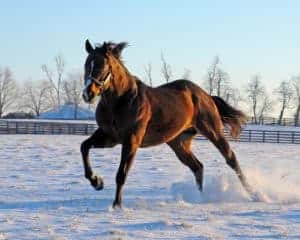HERDA: Not Just Skin Deep
- Topics: Article
Poco Bueno was a giant among horses. Built like a rock, he possessed power and speed. He was a champion in the show ring, then retired to stud. His greatness was carried on in succeeding generations of Quarter Horses.
Today, it is primarily through Poco Bueno's bloodline, say researchers at Mississippi State University and Cornell University, that the recessive gene that causes hyperelastosis cutis (HC) has passed. HC is a brutal affliction that carries with it a death sentence. Although affected horses can be made more comfortable and their lives prolonged, there is no cure. In some scientific circles, the disease is called hereditary equine regional dermal asthenia (HERDA).
HERDA is a term favored by researchers at the University of California, Davis (UC Davis), while researchers like Ann Rashmir, DVM, MS, Dipl. ACVS, associate professor of surgery and head of the Hyperelastosis Cutis Research Program at Mississippi State University, and Nena Winand, DVM, PhD, a geneticist and assistant professor in the Department of Molecular Medicine at Cornell University, opt for hyperelastosis cutis. Rashmir and Winand are collaborators on hyperelastosis cutis research.
"It doesn't matter what you call it," says Rashmir, "it's the same disease." For the purposes of this article, we'll use HC
Create a free account with TheHorse.com to view this content.
TheHorse.com is home to thousands of free articles about horse health care. In order to access some of our exclusive free content, you must be signed into TheHorse.com.
Start your free account today!
Already have an account?
and continue reading.

Related Articles
Stay on top of the most recent Horse Health news with

















